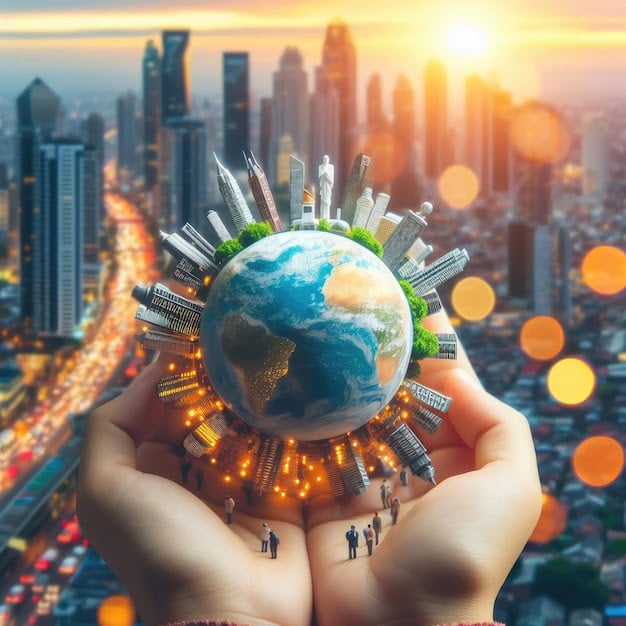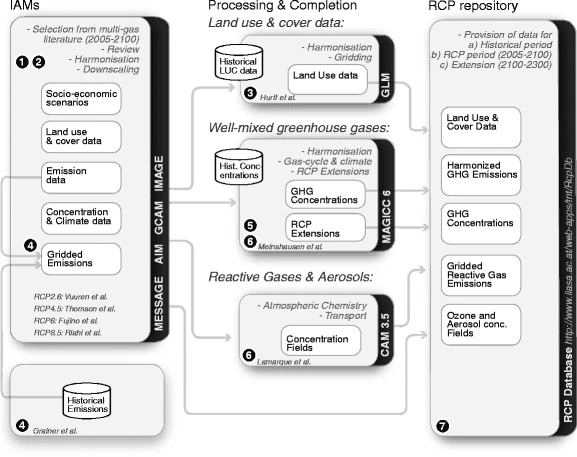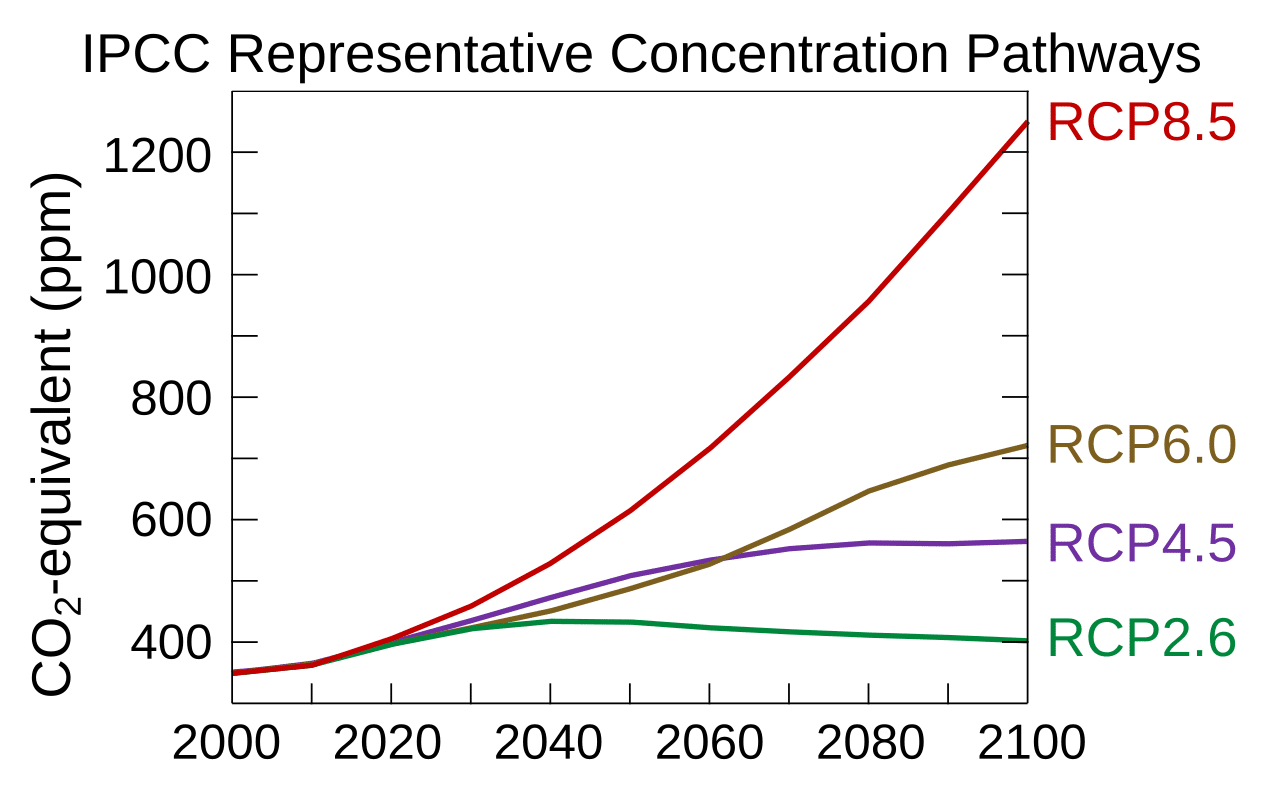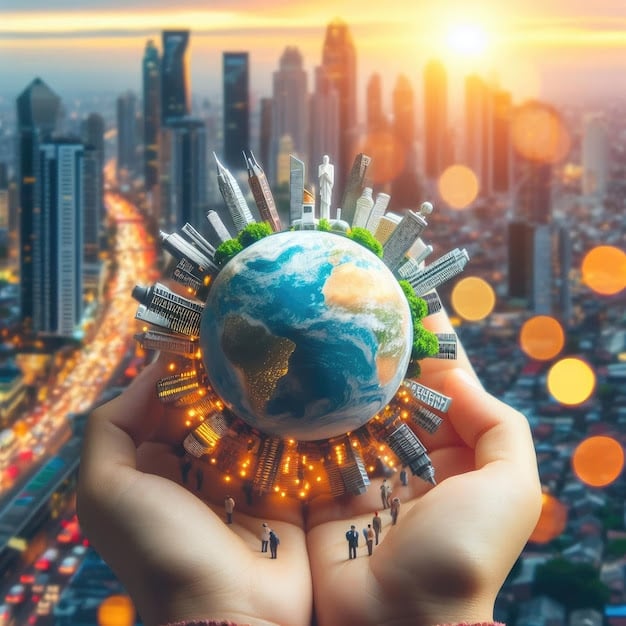
How do climate scenarios take into account our societies’ economic options?
What use are socio-economic scenarios for climate research?
The extent of climate change that our societies will have to cope with will depend on the trajectories of greenhouse gas (GHG) emissions over the coming decades. We also know that the possibilities for mitigating climate change (i.e., reducing emissions) and their costs will depend on future technologies, changes in lifestyles, and so on.
Similarly, we know that the vulnerability of societies to climate change, and the possibilities for adaptation, will depend in particular on the structure of economies (an economy based on agriculture does not have the same type of vulnerability as an economy oriented towards industry and services), urbanization (the vulnerability of cities and rural areas to events such as floods or heat waves are not the same)….
But whether we’re talking about future emissions, the evolution of technologies or that of the structure of economies, it’s out of reach to make forecasts: the uncertainties are too great, due to the very long time horizon and the complexity of the systems under consideration. We therefore need scenarios to provide alternative visions of plausible future worlds, and to assess their implications.

Scenarios thus provide quantified trajectories of socio-economic and technological developments over the coming decades, along with the associated GHG emission trajectories. These emission trajectories are used as inputs to climate models, which simulate the corresponding climate change. Together with climate change scenarios, socio-economic and technological trajectories are used for studies on impacts and adaptation to climate change, on the one hand, and for studies on mitigation, on the other.
Scenarios thus serve (i) to coordinate research on climate change, by ensuring the comparability of studies that all use the same set of scenarios, (ii) to explore uncertainties, by quantifying alternative visions of the future world, and (iii) ultimately to inform policy choices in response to climate change.

How are scenarios created?
The whole idea is that we cannot predict the evolution of complex technical and socio-economic systems over long time scales; and that there is no single future GHG emissions trajectory that we can predict (this trajectory will depend on a number of choices that our societies will make and a number of highly uncertain elements such as a technological breakthrough), nor even a single socio-economic and technical world compatible with a given emissions’ trajectory.
https://en.wikipedia.org/wiki/IPCC_Fifth_Assessment_Report
The approach to scenario building is therefore to “tell” alternative stories of plausible world developments, by bringing together experts from diverse backgrounds (demographers, economists, sociologists, technology specialists, etc.). These stories are rooted in knowledge of past developments, but seek to propose contrasting visions of plausible futures, for example a world where globalization continues to intensify versus one where regional fragmentation takes hold.
These stories are translated into values for the input parameters (e.g. population growth) of so-called integrated assessment models, which represent the joint evolution of technical systems, consumption behaviors and economies. These models then quantify the evolutions corresponding to these parameter values, in particular GHG emissions, but also, for example, the consumption of a given type of energy (coal, petroleum products, electricity, etc.) in a given sector (industry, transport, etc.) in a given region of the world (depending on the degree of regional disaggregation of the model used).
A scenario is thus the combination of a “story”, its translation into the values of a model’s input parameters, and the quantification of the corresponding evolutions by this model.
Two generations of scenarios
The SRES scenarios
The SRES scenarios (Special Report on Emissions Scenarios, IPCC, 2000) examined the effects on GHG emissions of uncertainties about a wide range of “driving forces” (demographics, economic growth, technological change, etc.). They are grouped into four main families, resulting from the combination of two sets of divergent assumptions about future socio-economic developments: on the one hand, a predominant emphasis on economic values or, on the contrary, an increasing emphasis on environmental values; on the other, increasing globalization versus increasing regionalization.
https://en.wikipedia.org/wiki/Special_Report_on_Emissions_Scenarios
RCP and SSP
A new generation of scenarios was developed for the IPCC’s 5th Assessment Report. It combines trajectories for the evolution of GHG concentrations in the atmosphere (RCPs, Representative Concentration Pathways), with socio-economic scenarios (SSPs, Shared Socio-economic Pathways) that explore the different combinations of economic, technological, demographic and institutional evolutions compatible with these RCPs.
https://en.wikipedia.org/wiki/Representative_Concentration_Pathway
https://link.springer.com/article/10.1007/s10584-011-0148-z
https://www.ipcc-data.org/guidelines/pages/glossary/glossary_r.html




